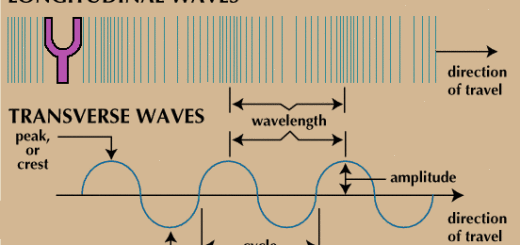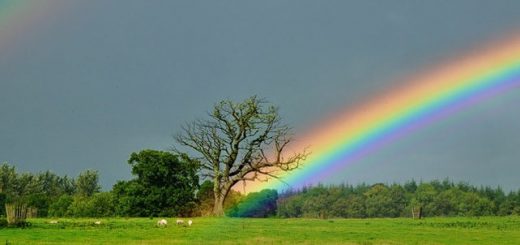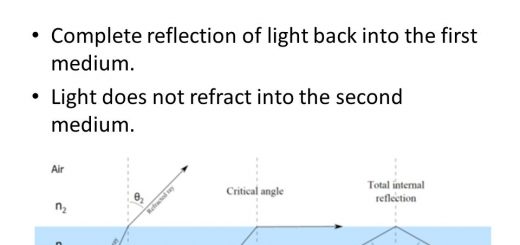Regular reflection and irregular reflection of light
Light reflection is the returning back of light waves in the same medium on meeting a reflecting surface, and the surface at which the reflection takes place is called the reflecting surface, The light reflection is classified according to the nature of the reflecting surface into the regular (uniform) reflection, and the irregular (non-uniform) reflection.
Reflection
Reflection is the bouncing back of light, sound, or other waves from a surface. There are two main types of reflection: regular reflection and irregular reflection. Regular reflection is important for many things, such as being able to see ourselves in mirrors and for the operation of telescopes. Irregular reflection is also important, as it is what allows us to see most objects around us. Without irregular reflection, the world would be a very dark place!
Light reflection
The reflections of light are usually caused by shiny things, such as the mirrors that show a reversed image of whatever is placed in front of them, The image seems to be as far behind the mirror as the object is in front of it.
The mirrors are very smooth polished pieces of metals or plastic that reflect all the light that falls on them, and the reflection appears to be behind the mirror, The surface of a clean mirror causes a regular reflection, while the dirty mirror surface causes an irregular manner.
We use mirrors when checking our appearance or driving, They also play an important role in telescopes, microscopes, cameras, and other optical (light-based) instruments.
Not only the mirrors make the reflections of light, But Most objects also reflect some of the light that falls on them, we see familiar objects like grass, trees, and the sky only because they reflect the light from the Sun into our eyes.
Regular (uniform) reflection
Regular reflection is the reflection of light rays when they meet (fall on) a smooth (uniform) and glistening surface, where the incident light rays are reflected in one direction, When a beam of parallel light rays is incident on a smooth and plane surface, the reflected rays will also be parallel, and it is called the regular reflection.
Regular reflection takes place when the light rays are incident on a polished smooth surface like a plane mirror, a stainless steel sheet and a thin sheet of aluminum, so, the reflected rays of light move only in a fixed direction.
We can see a very clear reflection on the smooth surface, Every light ray is reflected perfectly from the surface and bounces back regularly, Reflected image is very clear and sharp.
Regular reflection occurs when light rays hit a smooth, flat surface and are reflected at the same angle at which they hit the surface. This type of reflection produces a clear, undistorted image. Mirrors are a good example of a surface that produces regular reflection. When light rays bounce off a mirror, they remain parallel to each other, which allows us to see a clear image of ourselves.
Regular Reflection Examples
- Mirrors: The classic example! The smooth, polished surface of a mirror allows light rays to reflect at the same angle they hit the surface, creating a clear and undistorted reflection of whatever is in front of it.
- Calm water: A still lake on a clear day acts like a giant mirror, reflecting the sky and surrounding landscape perfectly.
- Polished metal surfaces: Shiny silverware, chrome on a car, or even a polished doorknob will all create clear reflections due to their smooth surfaces.
- Reflective clothing: Materials like safety vests or certain sports apparel use microscopic reflective beads that bounce light back towards the source, making them highly visible in low-light conditions.
Irregular (non-uniform) reflection
Irregular reflection is the reflection of light rays when they meet (fall on) a rough (non-uniform) reflecting surface, where the incident light rays are reflected in different directions.
When a beam of parallel light rays is scattered in all directions, So, the parallel rays incident on the surface will reflect in different directions, and it is called irregular or diffuse reflection.
Irregular reflection or diffused reflection takes place when the light rays are incident on a surface like a wall, the wood, a leaf of a tree, a piece of leather, a piece of paper or a piece of wool, which are not smooth or polished, so, the different portions of the surface reflect the incident light rays in different directions.
There is no definite image formed, but the surface becomes visible, It is commonly known as the scattering of light, and diffused reflection makes non-luminous objects visible.
Not all the light rays which hit an object are reflected, Some of the incident light rays are absorbed, The brightness of an object depends on the intensity of the incident light rays and also on the reflectivity of the object.
Irregular reflection, also called diffuse reflection, occurs when light rays hit a rough, uneven surface and are reflected in many different directions. It does not produce a clear image. Most surfaces we encounter in everyday life produce irregular reflections. The surface of a wall is rough, so when light rays hit it, they are scattered in different directions. This is why we can see the wall even though it is not reflecting light directly at us.
Irregular Reflection Examples
- Painted walls: The rough texture of a painted wall scatters light rays in all directions, allowing you to see the wall itself but not forming a clear reflection.
- Paper: The uneven fibers in paper cause light to scatter, which is why you can’t see a clear reflection on a piece of paper.
- Sand: The individual grains of sand all have different orientations, so they reflect light in many different directions. This is why sand appears bright and diffuses in sunlight.
- Most clothing: Fabric is made of woven or knitted fibers, creating a rough surface that scatters light and prevents you from seeing a clear reflection.
In the real world, many surfaces exhibit a combination of both regular and irregular reflection. For instance, a polished wooden table might reflect some light directly (regular reflection), causing a faint distorted image, while also scattering most of the light in various directions (irregular reflection) so you can see the wood grain itself.
You can follow Science Online on Youtube from this link: Science online
You can download Science Online application on Google Play from this link: Science Online Apps on Google Play
Types & Laws of light reflection, Regular & Irregular reflection of light




Very very helpful
It is very helpful
Thank you very much
In case there will be regular reflection all around what problems may arise?
Irregular reflection makes us see all the objects and everything around us. If light gets regularly reflected then every object would act like a mirror and our surroundings would be illuminated. This would have a blinding effect on eyes making it harder for us to see